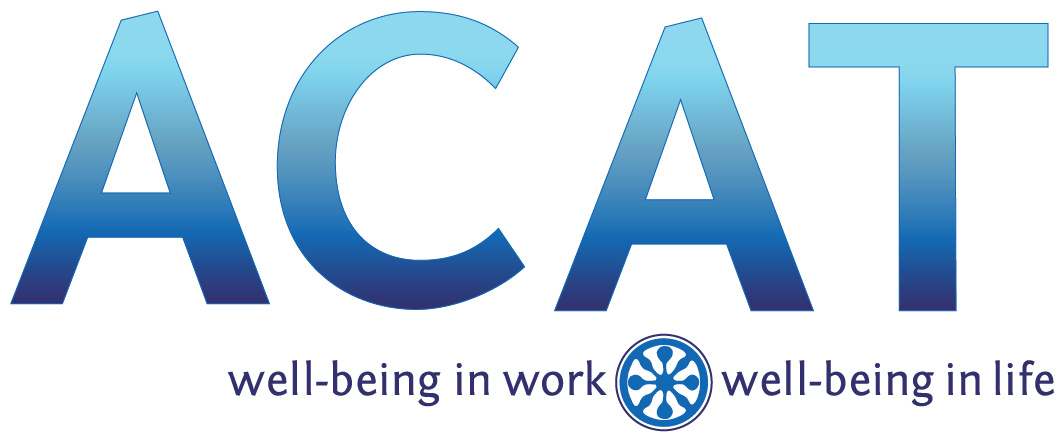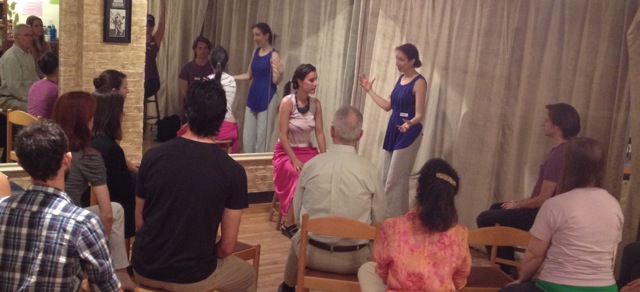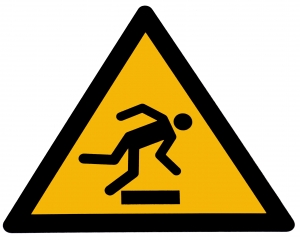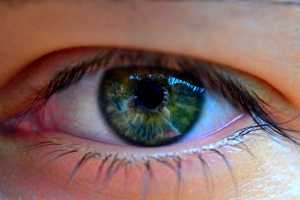 by Witold Fitz-Simon
In genre fiction, movies and TV, there is a type of story known as the procedural. The classic version of this type of story is the Police Procedural, best exemplified by the TV show “Law & Order.” The crime is committed and the detective is on the case, using forensics to search out cues, canvassing the neighborhood for potential witnesses and piecing together the truth. A good police procedural can be riveting. Each clue uncovered, each witness questioned can build up to a fascinating portrait of passion, of greed, of intrigue. The Alexander Technique can make your mundane daily routine just as interesting, even without the drama!
by Witold Fitz-Simon
In genre fiction, movies and TV, there is a type of story known as the procedural. The classic version of this type of story is the Police Procedural, best exemplified by the TV show “Law & Order.” The crime is committed and the detective is on the case, using forensics to search out cues, canvassing the neighborhood for potential witnesses and piecing together the truth. A good police procedural can be riveting. Each clue uncovered, each witness questioned can build up to a fascinating portrait of passion, of greed, of intrigue. The Alexander Technique can make your mundane daily routine just as interesting, even without the drama!
One of the key ways in which we can get ourselves in trouble in life—doing things like stressing ourselves out, or giving ourselves repetitive stress injuries or back pain—is by not paying much attention to the how and why we’re doing things. We go for the end result of our goals without being mindful of the choices we make to achieve them. This puts us at the mercy of habit: a history of behaviors that get the job done, but not usually in the most effective way possible. And if those habits have in them the seed of mis-use of our bodies, or emotional unease, then we can only add to our problems no matter what we do to get away from them.
Be Your Own Detective!
The solution to this is to be more like the police detective in the P. D. James mystery, or the Crime Scene investigator in the TV show. To pay more attention to the process and the details. In the Alexander Technique there are certain practices that you do over and over again in a lesson like sitting, standing and walking around. Even though there is a lot of repetition of these activities, we don’t think of them as exercises.
The idea of an exercise is something that you can learn to get right once and keep doing the same way, often quite mindlessly, to achieve a goal. In the Technique we think of the activities we carry out as “procedures.” You might spend a lot of time with your teacher sitting and standing, but the point is not learning to sit and stand correctly. The point is to become aware of how you approach the activity. What is your intention when you do it? What do you think about. You must become the detective in the mystery of your own life!
Get On The Case!
Try this right now, if you have the time. Do something simple and easy: stand up and sit down, or reach out and take a sip of your drink, if you have one at hand. Whatever activity you have chosen try it once or twice without thinking about it very much.
Now that you have your chosen activity fresh in your mind, take out your mental notepad and pen and interview your prime witness, yourself. Ask yourself these questions:
Did you notice anything special about what you just did? What were you thinking about as you did it? What did it feel like to do the activity?
If you don’t have any concrete answers, try the activity again a few times and see what you come up with.
Okay, now you’re going to put the pressure on your witness and ask for more details:
What was the first thing that you did to carry out your chosen activity? What part of you did you move first? When you moved, what happened to your neck? Did it get tense or was it easy and free? What was the quality of your movement? Was it rushed and effortful? Was it lethargic and slack? Was it easeful and effortless?
Let’s change tack here. You’re going to put on your forensic scientist hat and try some experiments.
Think about doing your activity again, but stop for a moment before you do it. Notice if you have tensed up in preparation. If you have, let everything soften, even if just a little bit, and try it again. What happens when you do it again this time?
Next time you do your activity, notice what you do with you head? Does it move in the direction you are moving, or does it seem to be heading somewhere else? What happens if you let it lead the movement in some way?
It doesn’t take much to go from rushing around mindlessly, oblivious to what’s going on around you, to having a bit more awareness of yourself and your environment and to start to change the way you do things. All it takes is curiosity and interest, and applying that to yourself. And if you need a little help, take an Alexander Technique lesson with a qualified teacher. You’ll never be bored again!
[author] [author_image timthumb='on']http://www.acatnyc.org/main/wp-content/uploads/2014/01/After-crop1.jpg[/author_image] [author_info]WITOLD FITZ-SIMON has been a student of the Alexander Technique since 2007. He is certified to teach the Technique as a graduate of the American Center for the Alexander Technique’s 1,600-hour, three year training program. A student of yoga since 1993 and a teacher of yoga since 2000, Witold combines his extensive knowledge of the body and its use into intelligent and practical instruction designed to help his students free themselves of ineffective and damaging habits of body, mind and being. <a href="www.mindbodyandbeing.com">www.mindbodyandbeing.com</a>[/author_info] [/author]

 by Brooke Lieb
Meade Andrews will be offering a two-weekend program on the Art of Group Teaching. Teachers and Third Year Trainees can register for one or both weekends. Click
by Brooke Lieb
Meade Andrews will be offering a two-weekend program on the Art of Group Teaching. Teachers and Third Year Trainees can register for one or both weekends. Click  by Jeffrey Glazer
Recently, I realized that it’s been years since I’ve spent a dime on efforts to get myself out of pain.
by Jeffrey Glazer
Recently, I realized that it’s been years since I’ve spent a dime on efforts to get myself out of pain. by Witold Fitz-Simon
ACAT’s 9th Annual Summer Intensive takes place July 13 - 17, 2015. There are still a few spaces left, for more information and to register, visit our
by Witold Fitz-Simon
ACAT’s 9th Annual Summer Intensive takes place July 13 - 17, 2015. There are still a few spaces left, for more information and to register, visit our 
 by Jeffrey Glazer
by Jeffrey Glazer by Dan Cayer
I’m not against correcting our posture or body on principle. I wish all it took to rid ourselves of chronic pain and tension was figuring the right angle or position, and tapping our body into place. It’s such a seductive offer; that we need only arrange our body and then get on with the rest of our day.
by Dan Cayer
I’m not against correcting our posture or body on principle. I wish all it took to rid ourselves of chronic pain and tension was figuring the right angle or position, and tapping our body into place. It’s such a seductive offer; that we need only arrange our body and then get on with the rest of our day. by Witold Fitz-Simon
by Witold Fitz-Simon by John Austin
There have been
by John Austin
There have been  by Brooke Lieb
I have always taken having good balance for granted. Since I was a small child, standing on one leg, walking along a balance beam and other activities that require balance on one leg have been easy for me. In ballet class, I could go up on demi-pointe on one foot and stay easily balanced for an indefinite amount of time. I have come to appreciate this is due in no small part to the luck of the genetic lottery. I’ve had my share of near misses, and the occasional tumble, and as the years progress, I can tell my Alexander training has given me better balance and coordination, even if I started off fairly well to begin with.
by Brooke Lieb
I have always taken having good balance for granted. Since I was a small child, standing on one leg, walking along a balance beam and other activities that require balance on one leg have been easy for me. In ballet class, I could go up on demi-pointe on one foot and stay easily balanced for an indefinite amount of time. I have come to appreciate this is due in no small part to the luck of the genetic lottery. I’ve had my share of near misses, and the occasional tumble, and as the years progress, I can tell my Alexander training has given me better balance and coordination, even if I started off fairly well to begin with. by Brooke Lieb
As part of
by Brooke Lieb
As part of 

 by Witold Fitz-Simon
Eye strain is an increasing problem for many of us in our digital world. Our eyes were not built to be constantly staring at a fixed point with a bright light shining straight at them for several hours at a time. They are, in fact, incredibly skilled at tracking the movement of all the things in our environment, as well as moving around themselves, but once you fix your gaze on something for an extended period of time, all sorts of mechanisms can start to go wrong.
by Witold Fitz-Simon
Eye strain is an increasing problem for many of us in our digital world. Our eyes were not built to be constantly staring at a fixed point with a bright light shining straight at them for several hours at a time. They are, in fact, incredibly skilled at tracking the movement of all the things in our environment, as well as moving around themselves, but once you fix your gaze on something for an extended period of time, all sorts of mechanisms can start to go wrong. by Jeffrey Glazer
For those familiar with the popular Seinfeld show, there is an episode during which Jerry and George are thinking of ideas for a sitcom to pitch to NBC. George comes up with the idea to make it “a show about nothing”.
by Jeffrey Glazer
For those familiar with the popular Seinfeld show, there is an episode during which Jerry and George are thinking of ideas for a sitcom to pitch to NBC. George comes up with the idea to make it “a show about nothing”.